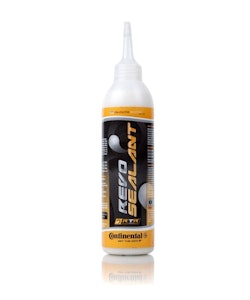BIKE SEALANT
It has happened to everyone. You are out on a ride enjoying yourself when you suddenly hear a high-pitched release of air. At the time, it seems like the worst sound in the world. You know your adventure is about to come to an abrupt stop. All you want to do it keep riding but you can’t. Not only does your ride come to an immediate end, but all your friends must wait around for you to fix your flat. Now you are on the side of the road or trail changing your tube and getting heckled by your friends every step of the way. Hurry up! You’re so slow! Pump faster! If only there was a way to eliminate the majority of flat tires, wouldn’t that be great? Luckily for the cycling community, the creation of bike sealant has done just that.
Sealant eliminates flats created from small punctures in the tube and/or tire. As soon as a puncture occurs, the escaping area carries sealant to the puncture area. The fibers and binders in the sealant then build up and create a flexible plug in the hole. During this process it is normal for some of the sealant to spray out of the hole as the patch is forming. If a puncture is too big, sealant may not be able to span across the size of the hole. In this case, a spare tube may be required to finish off your ride.
There are two situations in which bike sealant is used, with tubes and without tubes. When I say without tubes, I am referring to use with tubeless tires and wheels. Since there is not an actual tube in a tubeless setup, the sealant is the only defense from flat tires caused by punctures and small slashes. If a slash or puncture occurs that is too large for the sealant to cover, it’s usually time for a new tire if you want to continue running tubeless. Tire sealant in a standard tube works the say way, the main difference being that the sealant is patching holes in the tube instead of holes in the tire.
On a tubeless tire, sealant can either be installed through the valve stem or poured directly into the tire when part of the bead is separated from the rim. With a standard tube, sealant must be installed through the valve stem. To do this, a valve core remover must be used to remove the valve core. This allows room for the sealant to travel through the valve. Valve cores can be removed on presta and schrader valves.
If you have any questions about bike sealant or about the sealant installation process, hop on a call or a chat with one of our expert Gear Advisors at 888-880-3811. They are always happy to help you with any questions you may have.













